
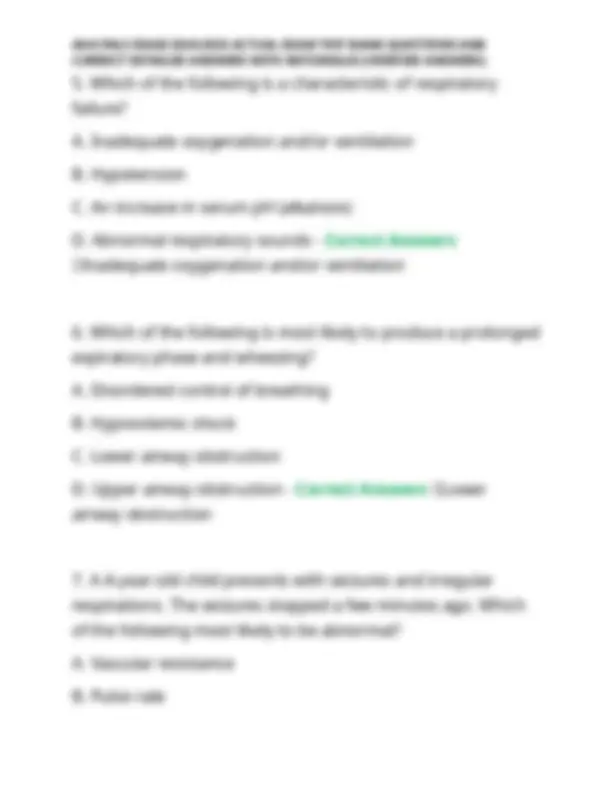
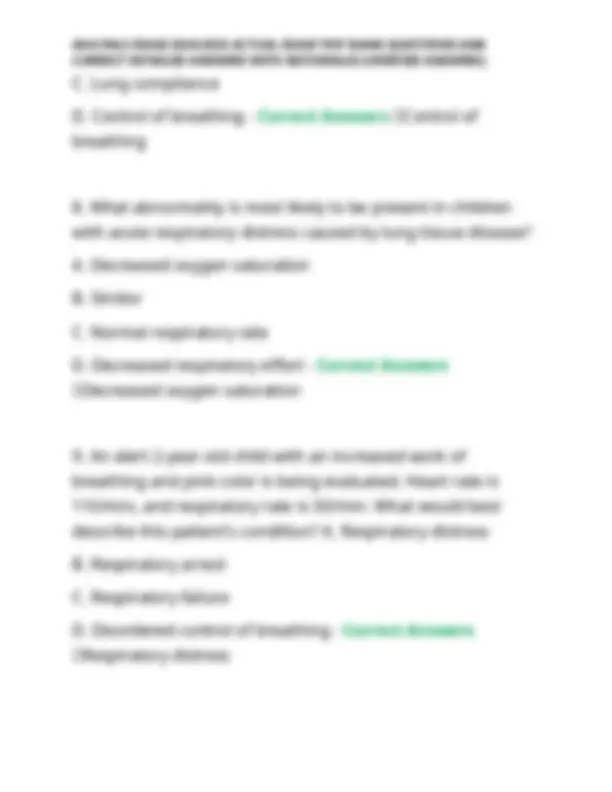
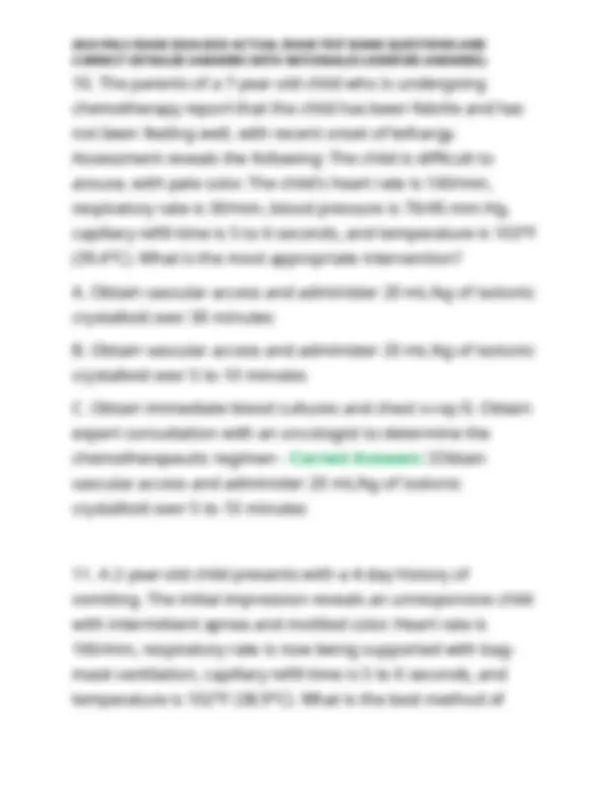
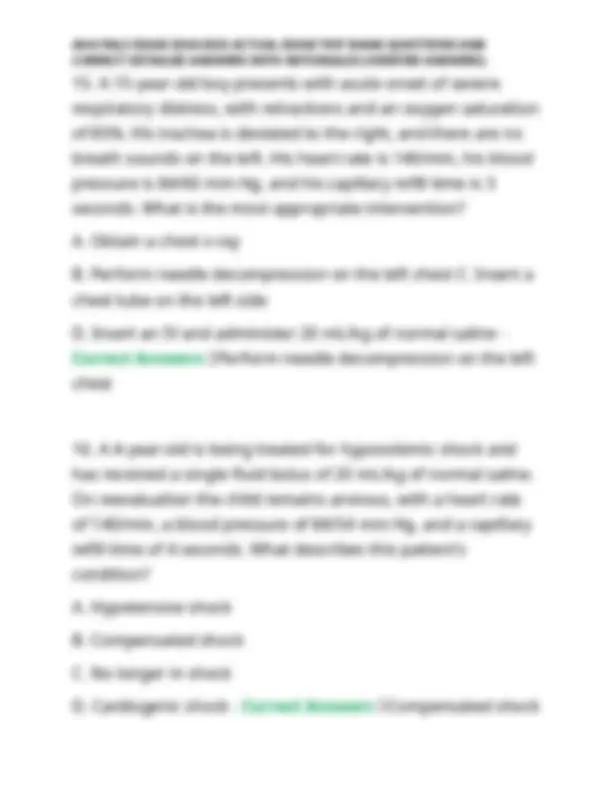
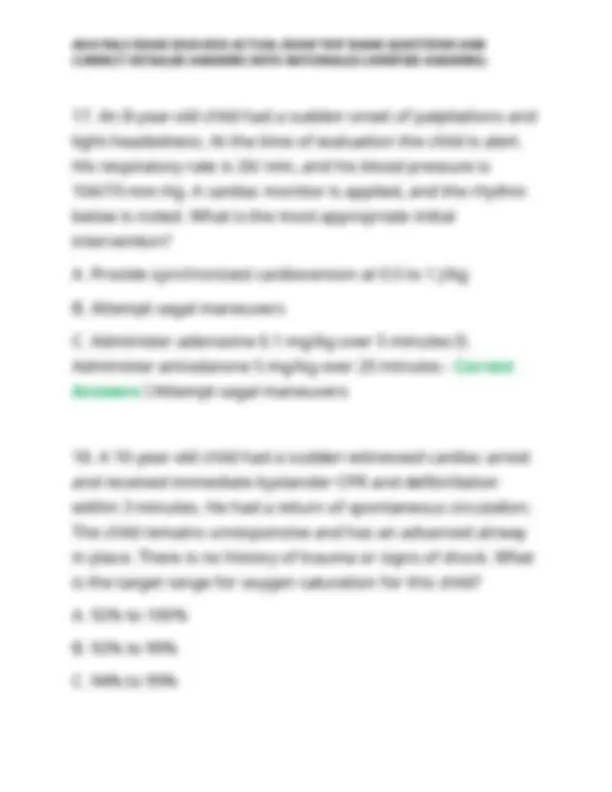
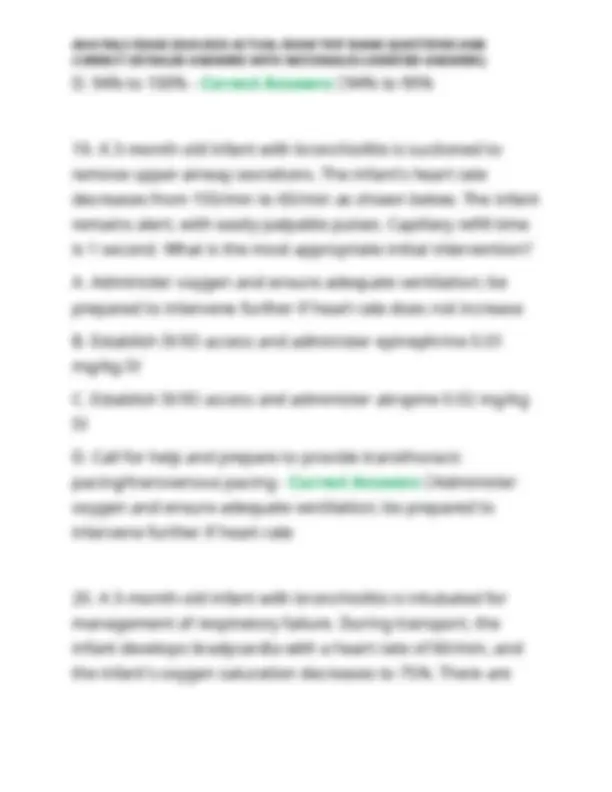
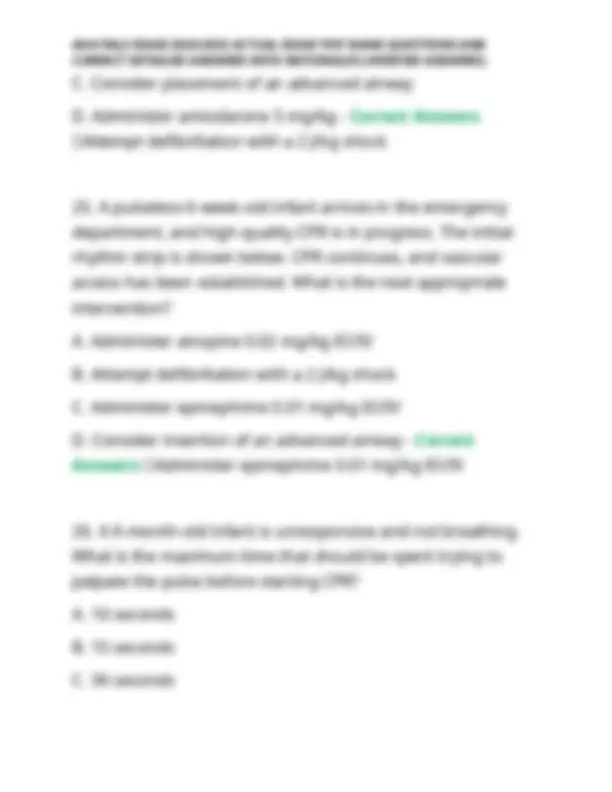
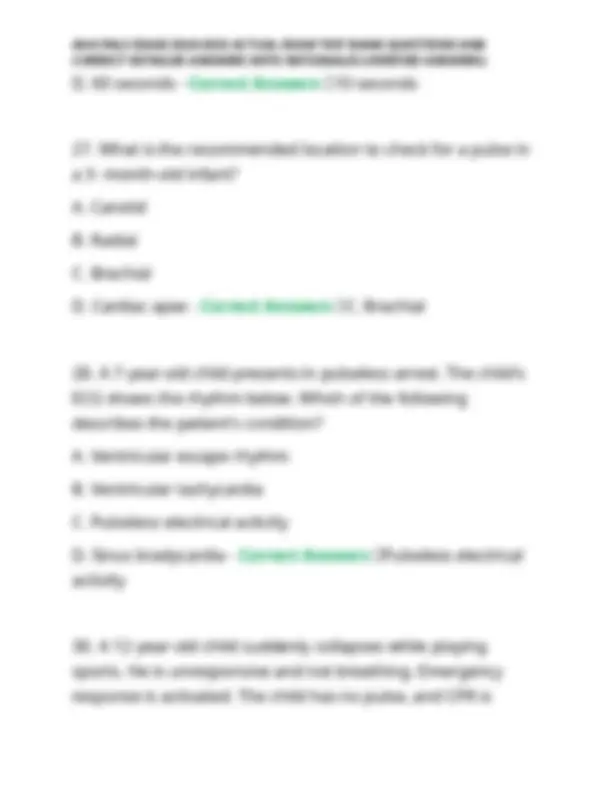
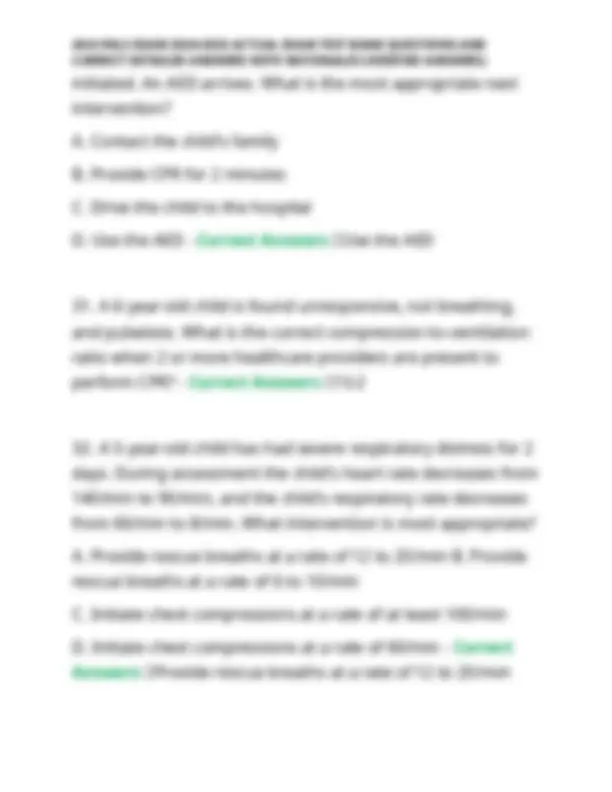
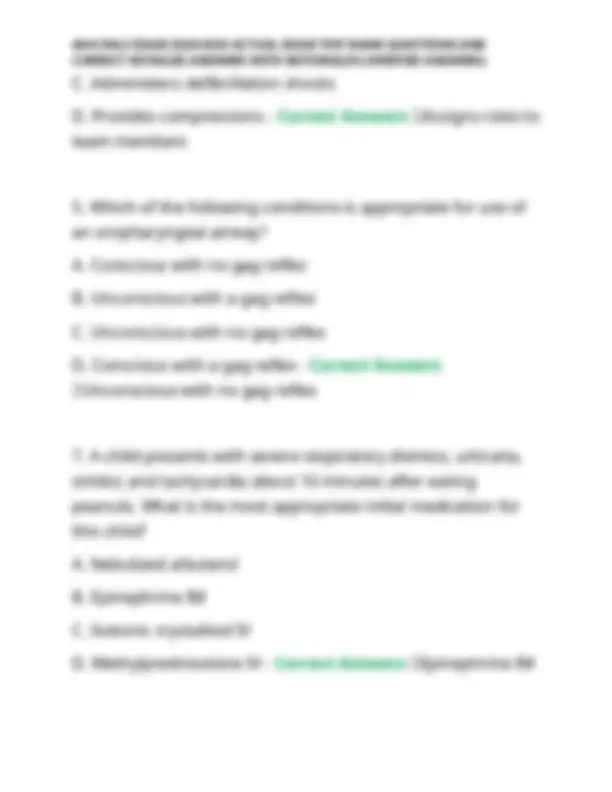
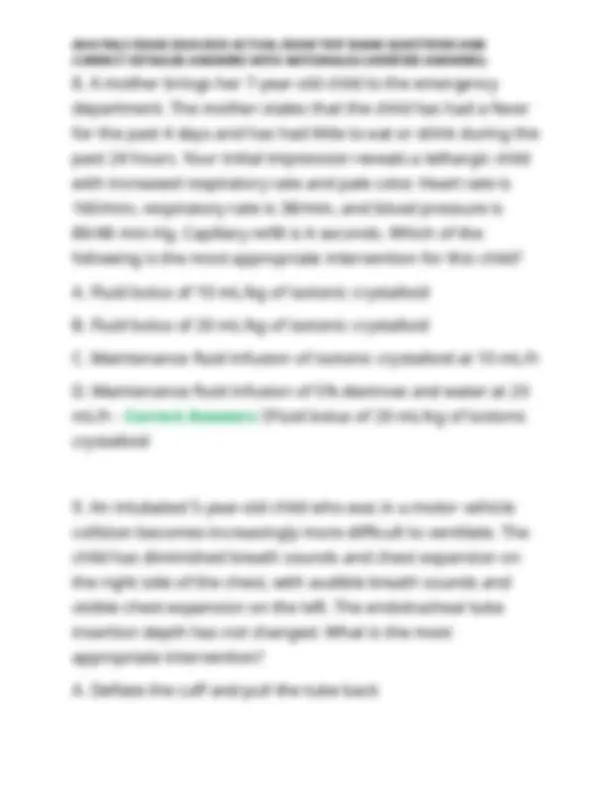
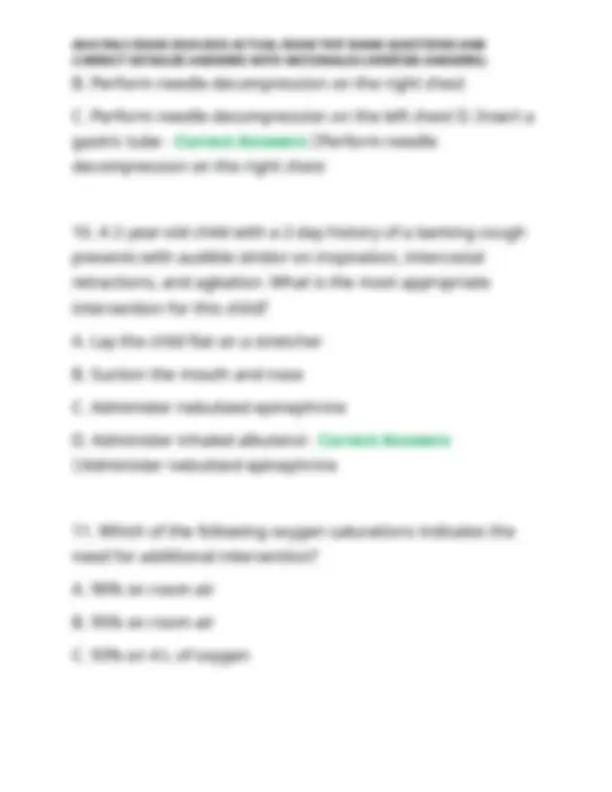
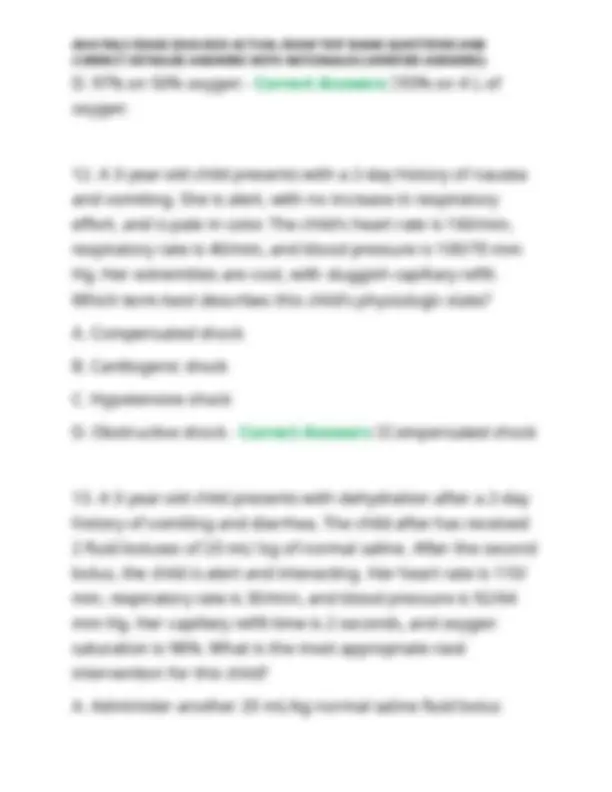
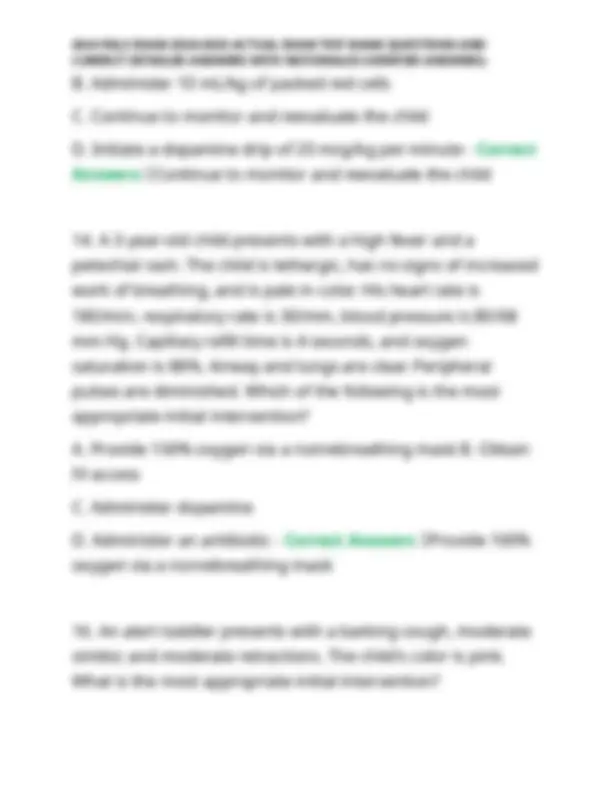
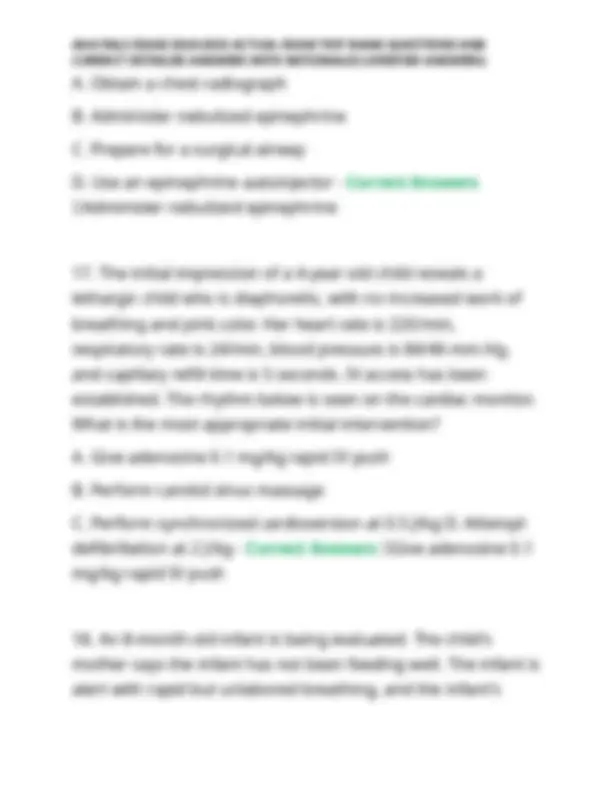
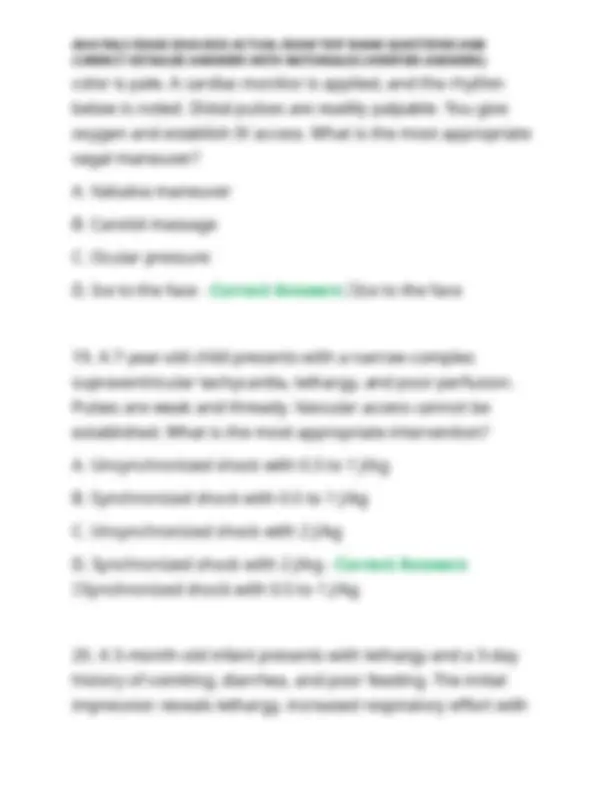
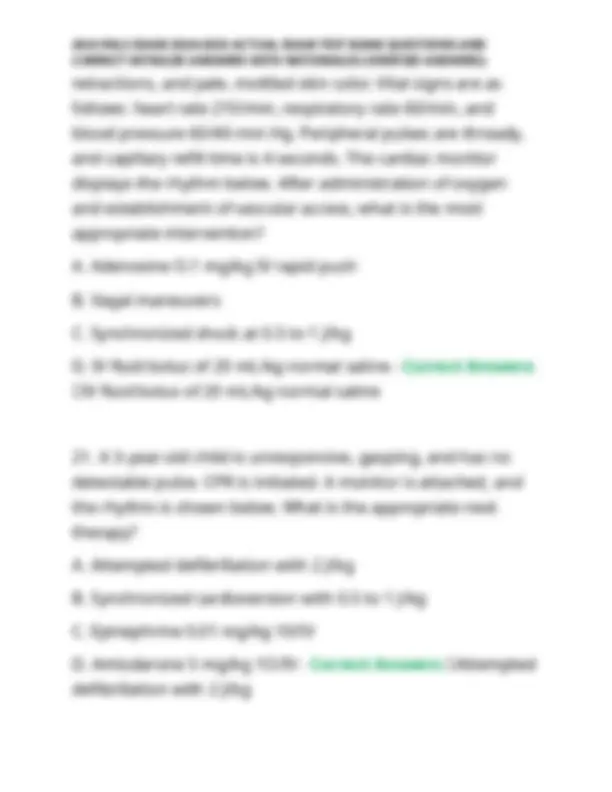
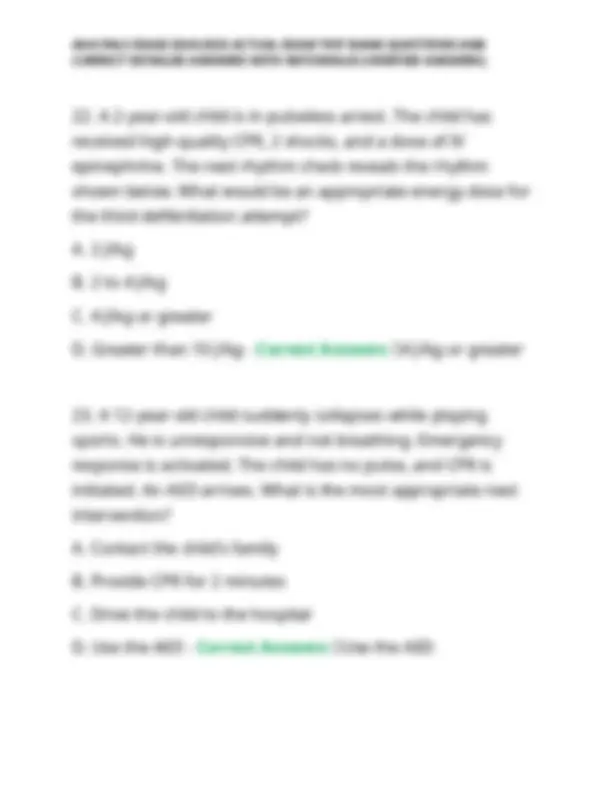
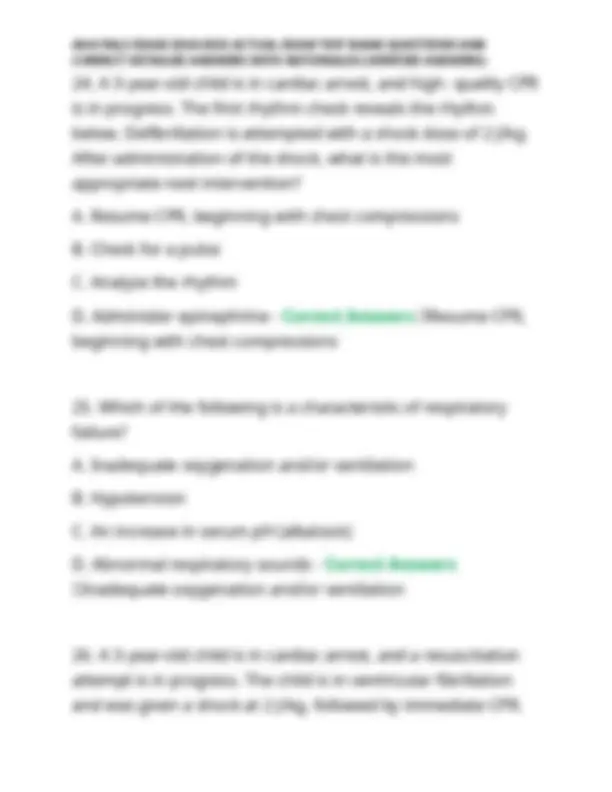
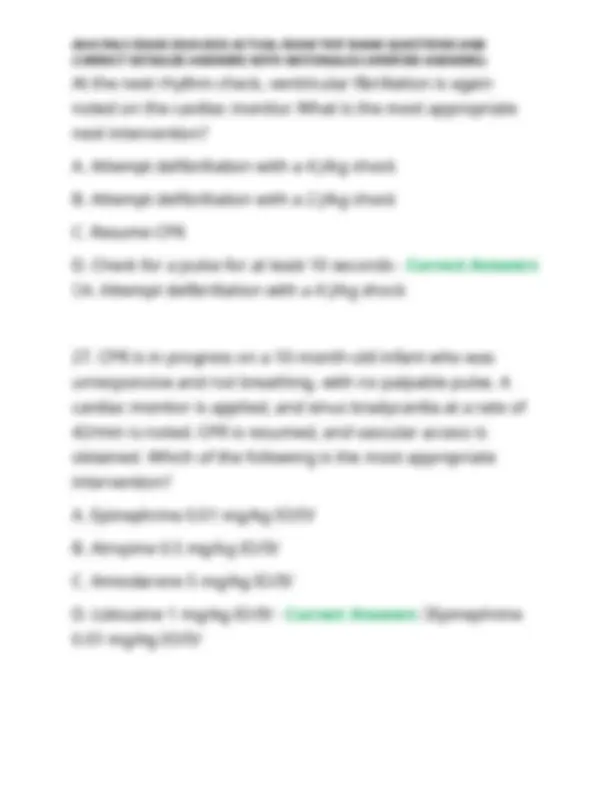
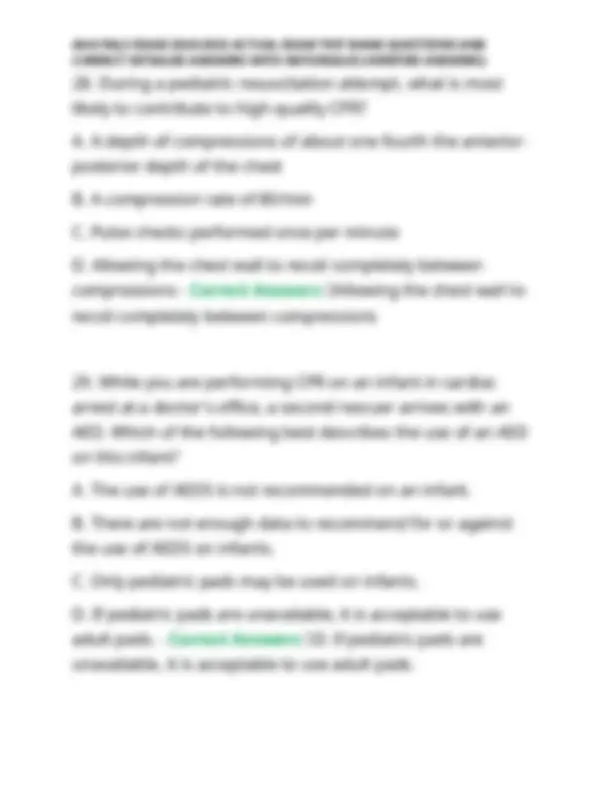
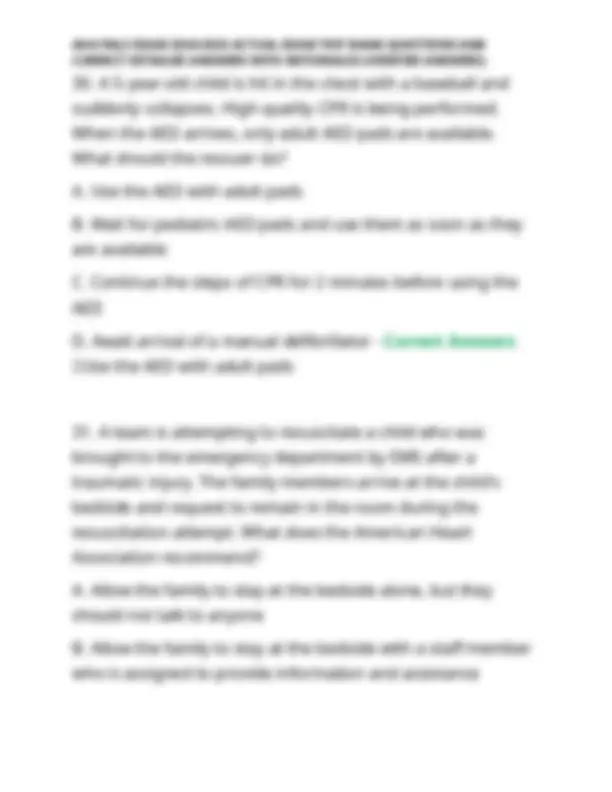
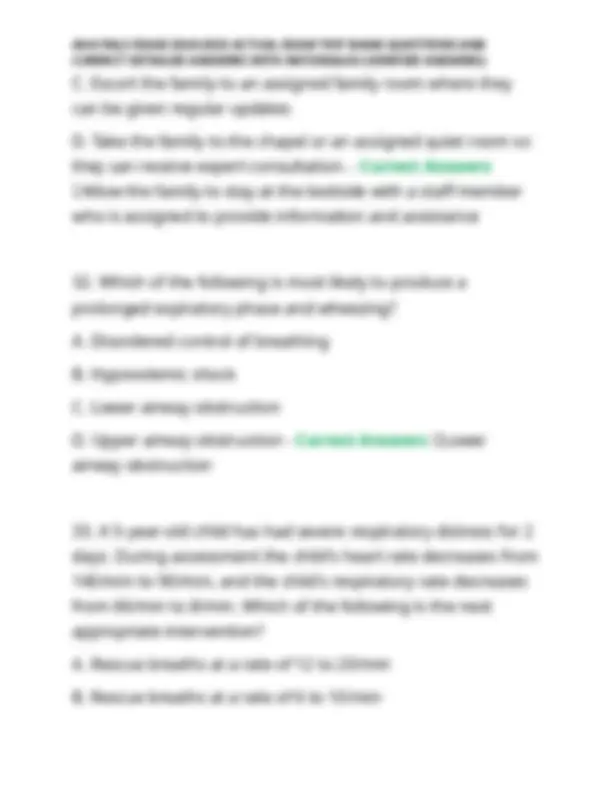



Study with the several resources on Docsity

Earn points by helping other students or get them with a premium plan


Prepare for your exams
Study with the several resources on Docsity

Earn points to download
Earn points by helping other students or get them with a premium plan
Community
Ask the community for help and clear up your study doubts
Discover the best universities in your country according to Docsity users
Free resources
Download our free guides on studying techniques, anxiety management strategies, and thesis advice from Docsity tutors
AHA PALS EXAM 2024-2025 ACTUAL EXAM TEST BANK QUESTIONS AND CORRECT DETAILED ANSWERS WITH RATIONALES (VERIFIED ANSWERS)
Typology: Exams
1 / 32

This page cannot be seen from the preview
Don't miss anything!

























CORRECT DETAILED ANSWERS WITH RATIONALES (VERIFIED ANSWERS)
CORRECT DETAILED ANSWERS WITH RATIONALES (VERIFIED ANSWERS) B. Hypovolemic shock C. Significant bradycardia D. Cardiogenic shock - Correct Answers ✅Septic shock
CORRECT DETAILED ANSWERS WITH RATIONALES (VERIFIED ANSWERS) C. Lung compliance D. Control of breathing - Correct Answers ✅Control of breathing
CORRECT DETAILED ANSWERS WITH RATIONALES (VERIFIED ANSWERS)
CORRECT DETAILED ANSWERS WITH RATIONALES (VERIFIED ANSWERS) B. Administer nebulized epinephrine C. Prepare for a surgical airway D. Use an epinephrine autoinjector - Correct Answers ✅Administer nebulized epinephrine
CORRECT DETAILED ANSWERS WITH RATIONALES (VERIFIED ANSWERS)
CORRECT DETAILED ANSWERS WITH RATIONALES (VERIFIED ANSWERS) D. 94% to 100% - Correct Answers ✅94% to 99%
CORRECT DETAILED ANSWERS WITH RATIONALES (VERIFIED ANSWERS) breath sounds on the right side, but no air entry is heard on the left side. What is the most appropriate initial intervention? A. Administer epinephrine 0.01 mg/kg IV B. Place a chest tube on the left C. Verify the endotracheal tube position D. Aggressively suction the endotracheal tube - Correct Answers ✅Verify the endotracheal tube position
CORRECT DETAILED ANSWERS WITH RATIONALES (VERIFIED ANSWERS) C. Consider placement of an advanced airway D. Administer amiodarone 5 mg/kg - Correct Answers ✅Attempt defibrillation with a 2 J/kg shock
CORRECT DETAILED ANSWERS WITH RATIONALES (VERIFIED ANSWERS) D. 60 seconds - Correct Answers ✅10 seconds
CORRECT DETAILED ANSWERS WITH RATIONALES (VERIFIED ANSWERS)
CORRECT DETAILED ANSWERS WITH RATIONALES (VERIFIED ANSWERS) more lethargic and continues to have subcostal retractions. What does this change likely indicate? A. Respiratory distress is unchanged B. Progression toward respiratory failure C. Improved respiratory status D. Neurologic impairment - Correct Answers ✅Progression toward respiratory failure
CORRECT DETAILED ANSWERS WITH RATIONALES (VERIFIED ANSWERS)
CORRECT DETAILED ANSWERS WITH RATIONALES (VERIFIED ANSWERS) B. Perform needle decompression on the right chest C. Perform needle decompression on the left chest D. Insert a gastric tube - Correct Answers ✅Perform needle decompression on the right chest